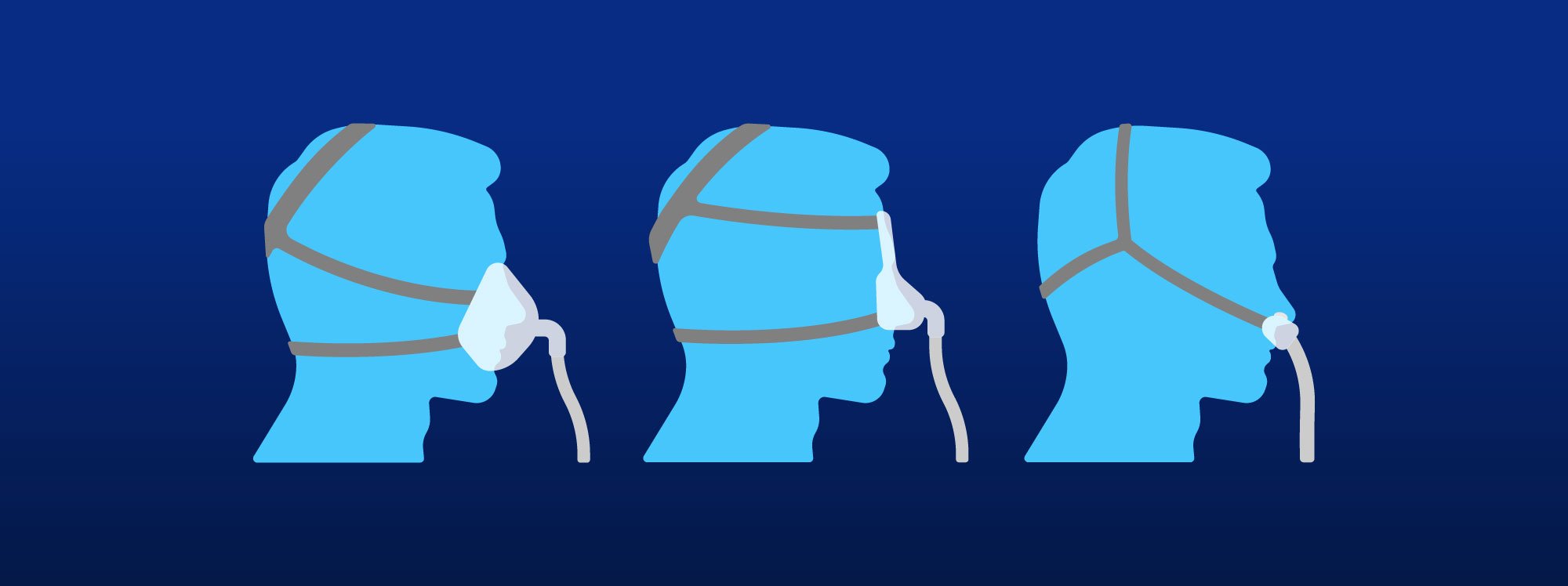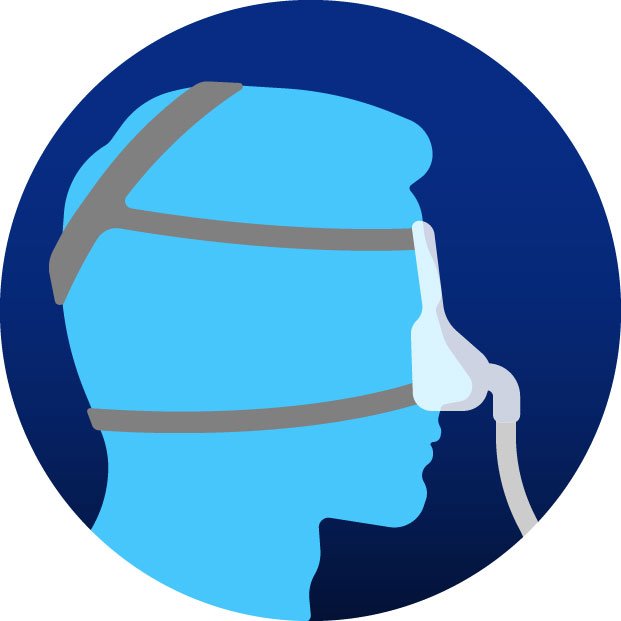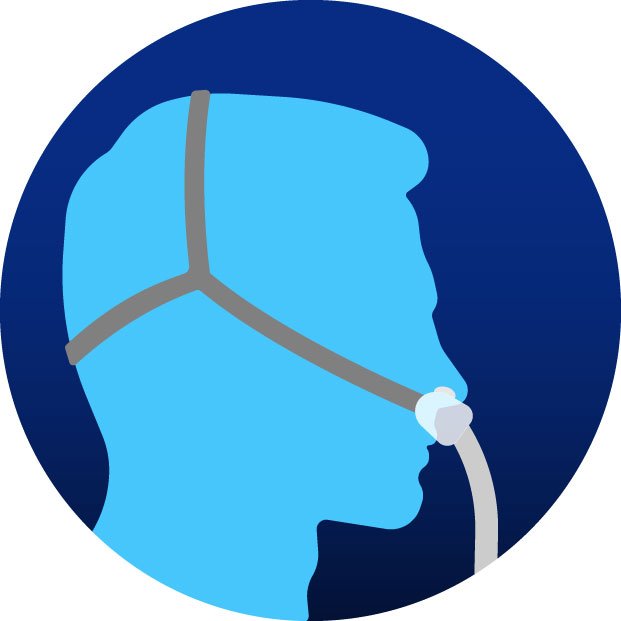Selecting the Right Mask for Your CPAP Therapy
Sleep apnea is an increasingly common sleep health condition. According to the American Academy of Sleep Medicine, over 30 million people in the US suffer from Obstructive Sleep Apnea (OSA), the most prevalent type of sleep apnea. Sleep apnea occurs when the muscles that support the soft tissues in the throat relax too much, temporarily cutting off breathing. While many view the symptomatic disrupted sleeping, snoring, and excessive daytime sleepiness as nothing more than a benign annoyance, these symptoms are warning signs for what is now being understood as a serious health threat. Untreated sleep apnea is associated with critical comorbidities, including hypertension, diabetes, and coronary heart disease. While long-term weight loss may help reduce sleep apnea symptoms for some patients, the more immediate treatment is Continuous Positive Airway Pressure (CPAP) therapy. CPAP machines are the gold-standard medical devices in the treatment of Obstructive Sleep Apnea.
The Importance of CPAP Masks
While there are many different types of CPAP machines, it is the CPAP mask that is a critical component in the delivery of pressured air. All CPAP devices work by pressurizing and filtering the air and delivering it through a hose and mask that you wear on your face while sleeping. CPAP keeps airways open and improves breathing quality, leading to improved sleep and better overall health. Mask styles vary, but all CPAP masks have the following four components. The mask cushion is the part that sits over your nose or over your mouth and nose, depending on the type of mask you choose. The cushions are usually made of either silicone or memory foam. The headgear is the part of the mask that sits over the head and keeps the mask in place. The elbow connects the CPAP machine tubing to the mask, facilitating the airflow. Lastly, the mask frame connects all of the parts together. While buying a CPAP mask can be overwhelming, it is important to work with your sleep health practitioner to discuss your unique sleep style and their pressure prescription. CPAP users will find that the right mask will not only make treatment more comfortable but it is also critical to the therapy’s success.
CPAP masks come in various sizes and fall into three basic mask types, each with its own criteria for use. Each mask type has pros and cons, so it is essential to review mask selection with your sleep specialist. When choosing a mask, you should understand how you sleep in terms of movement and position because mask fit is the key to getting the most comfort and success from CPAP therapy.
Full-Face CPAP Mask
The first mask type is the full-face CPAP mask. This mask covers both the mouth and nose and is a good choice if you have been prescribed a high-pressure setting since it diffuses the air over a greater surface area. The full-face mask is suitable for back sleepers whose limited movement helps keep a secure seal on the mask and avoid leakage. This mask is also good for mouth breathers since it has full mouth coverage. However, for some, the full-face CPAP mask is too bulky and can be claustrophobic.
According to the Sleep Foundation, the Philips Respironics DreamWear is a top choice for full-face CPAP masks. Unlike the standard full-face style, the DreamWear has a low profile that sits below the nose, making this an excellent choice for those who find the standard full-face mask too obtrusive. The tubing that connects to the machine sits at the top of the head, making this a good option for active and side sleepers.
Nasal CPAP Mask
The second type of mask is the nasal CPAP mask. The nasal mask offers an excellent middle ground between the full face mask and nasal pillows. Because of its popularity, it is offered in a wide variety of fits and sizes. A nasal mask covers the entire nose, from the bridge to the upper lip. It is a good choice for those who need a higher pressure setting due to its natural airflow. This style of mask has an excellent seal, reducing the chance of leakage. It is also a common choice for those who move around while asleep. Because the mouth is not covered, the nasal mask would not be a good choice for mouth breathers.
A top pick in this category would be ResMed AirFit N20 Nasal CPAP Mask. It is very lightweight, making it a good choice for those who find the full-face mask to be too claustrophobic. This mask features front-of-face tubing and high-comfort padded headgear.
Nasal Pillow CPAP Mask
The third type of mask is the nasal pillow CPAP mask. This is a top choice for people who don’t like the restrictive feeling of a mask covering their face. Nasal pillows look similar to headphone ear pods that fit into the nose. They have the least contact with the face and are also the best choice for men with facial hair that could interfere with a full face mask creating a tight seal. However, they may not be the best choice for those who sleep on their side or move around during sleep.
The Sleep Foundation recommends the ResMed AirFit P10 Nasal Pillow CPAP Mask because it is lightweight, comfortable, and quiet.
CPAP Supplies and Insurance
Insurance carriers will consider your AHI when determining coverage. AHI is the apnea-hypopnea index which represents the number of times per hour you experience an apnea, or period of breathing cessation. The higher the AHI, the more severe the sleep apnea. To determine your AHI, you must undergo a sleep study which can be done at a sleep lab or at home using equipment made for this testing. You must also meet two requirements before insurance will review your CPAP coverage. First, you must have a prescription from your health practitioner indicating that you have sleep apnea and not another health issue, and second, you must meet the compliance period of usage. A compliance period is defined as wearing your sleep apnea mask for at least 4 hours per night, for 70% of the nights, during a consecutive 30-day period.
Cleaning and Refreshing Your CPAP Supplies
To protect your investment and get the most from treatment, CPAP machines and their components require frequent cleaning. Because the headgear and mask are touching your face, they are prone to microbes and bacteria formation. The tubing and mask are also components that are breathed into; Maintaining their hygiene is important so you don’t get sick from using your CPAP. When you are sick, cleaning your machine and its components daily is especially important. Since you are breathing through the mask and tubing for the entire night, you want to ensure you are not making yourself even sicker. Most manufacturers recommend disassembling your components from the machine and washing them in warm soapy water. The water chamber of your machine can be washed with equal parts warm water and white vinegar. Most CPAP machines use filters. Disposable filters should be changed every two weeks, while reusable filters should be washed every two weeks and replaced every three months. CPAP masks should be replaced every three months.
As sleep apnea prevalence increases every year, the equipment used to help treat this serious sleep condition has improved, making CPAP therapy more comfortable and leading to greater compliance. CPAP masks come in a wide variety of styles to suit a wide range of sleep styles. By finding the right mask for your sleep pattern, you will get the most from your CPAP therapy, resulting in a better night’s sleep and better overall health.




